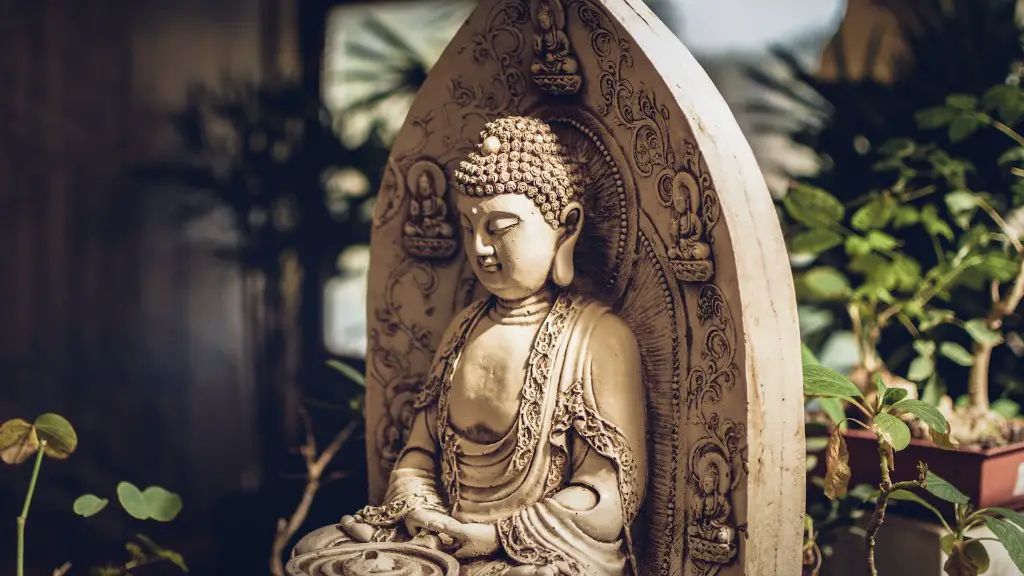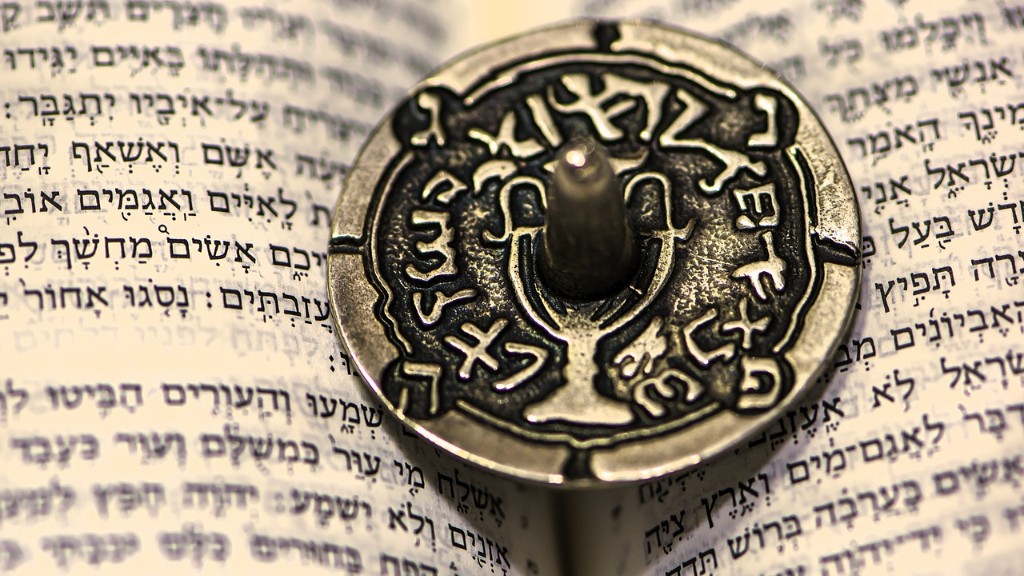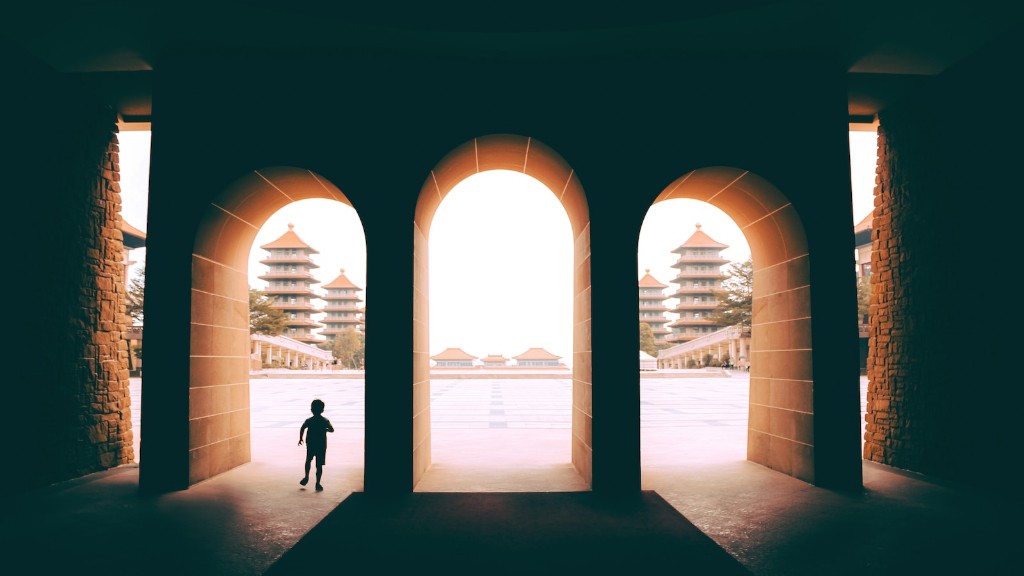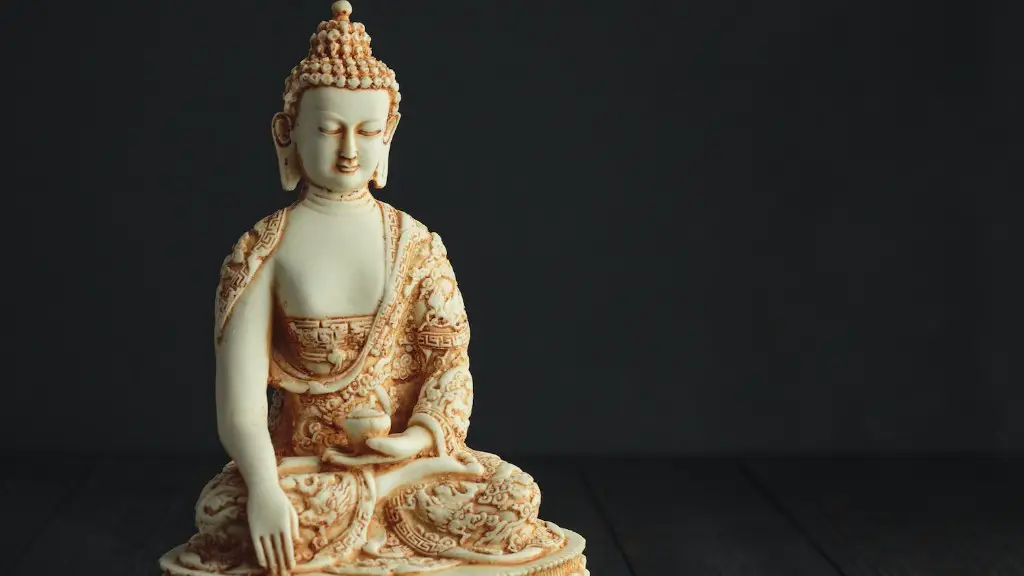Buddhism does not have a holy book in the same sense as other religions. The Buddha’s teaching was not written down for centuries after his death, and it was only later compiled into texts. Even these texts are not considered to be scripture in the same sense as the Bible or Quran.
There is no one holy book that Buddhism has. There are a variety of texts and scriptures that Buddhists look to for guidance and wisdom, including the Theravada Pali Canon and the Mahayana Sutras. While there is no one book that is considered holy or authoritative above all others, Buddhists do often revere certain texts as being particularly significant or helpful in understanding the teachings of the Buddha.
What is the holy scripture of Buddhism?
The Lotus Sūtra is a key scripture of Mahāyāna Buddhism, which is followed by many Buddhists in East Asia. The Lotus Sūtra is seen as a summation of the Buddha’s teachings, and is highly influential in Mahāyāna Buddhism.
The Tripiṭaka is the Buddhist canon, composed of three main categories of texts: the Sutra Piṭaka, the Vinaya Piṭaka, and the Abhidhamma Piṭaka. The Sutra Piṭaka is a collection of Buddha’s discourses, the Vinaya Piṭaka is a collection of monastic rules, and the Abhidhamma Piṭaka is a collection of philosophical and psychological treatises.
Do Buddhist have a Bible
The term buddhavacana is used in a number of ways in Buddhist texts. It can refer to the actual words spoken by the Buddha, which are seen as the highest authority on the Dharma. It can also refer to texts which are seen as containing the Buddha’s words, even if they were not actually spoken by him.
Buddhavacana texts are generally seen as in accord with the teachings of the historical Buddha, which is termed “the Dharma”. This means that they are not seen as containing new or different teachings, but rather as a faithful record of the Buddha’s words.
Buddhavacana texts have special status as sacred scripture and are generally accorded a high degree of respect by Buddhists. They are often seen as a valuable source of guidance and inspiration, and are used in a wide range of religious and spiritual practices.
The Tipitaka is the central canon of Theravada Buddhism, and consists of three parts: the Vinaya Pitaka (monastic rules), the Sutta Pitaka (Buddhist sermons), and the Abhidhamma Pitaka (philosophical teachings).
The Mahayana Sutras: These texts are revered by Mahayana Buddhists, and include the Lotus Sutra, the Diamond Sutra, and the Heart Sutra.
The Tibetan Book of the Dead: This text is used as a guide for those who are dying, and for those who are helping them through the process of death.
There are many other important Buddhist texts, including the Dhammapada (a collection of the Buddha’s sayings), the Jataka Tales (stories about the Buddha’s previous lives), and the Abhidharma (a philosophical treatise).
What is the oldest holy book in Buddhism?
The Gandhāran Buddhist texts are a collection of ancient manuscripts that were discovered in the Gandhāra region of present-day Pakistan and Afghanistan. These texts date back to the 1st century BCE to 3rd century CE, and are the oldest Buddhist manuscripts that have been discovered to date. The texts were sold to European and Japanese institutions and individuals in the early 20th century, but are currently being recovered and studied by several universities. The texts are important for understanding the early history of Buddhism, and provide insights into the development of the religion.
Siddhartha Gautama was the first person to reach the state of enlightenment. He is known as the Buddha. Buddhists do not believe in any kind of deity or god, although there are supernatural figures who can help or hinder people on the path towards enlightenment.
What is the name of the famous Buddhist book?
The Digha Nikaya is a famous Buddhist book that was written 2300 years ago. It contains some of the speeches of the Buddha, which are still relevant and insightful today. The Nikaya covers a wide range of topics, from the nature of reality to the path of meditation and enlightenment. If you’re interested in learning more about the Buddha’s teachings, the Digha Nikaya is a great place to start.
There is no concept of sin in Buddhism. This is because Buddhists believe that we are all capable of achieving enlightenment and that the path to enlightenment is through our own actions.
What do Buddhists pray for
Buddhist followers often pray to buddhas, bodhisattvas, and spiritual masters. One of the meanings behind these prayers is to invoke the enlightened qualities of our own heart and mind through letting go of the ego’s resistance to humility. By praying to those who have already attained enlightenment, we open ourselves up to the possibility of achieving the same state. Through humility, we let go of our ego’s stronghold on our thoughts and actions, making room for the buddha-nature to shine through.
Buddhism is a religion that was founded by Siddhartha Gautama in the 6th century BCE. Christianity is a religion that was founded by Jesus of Nazareth in the 1st century CE. Most scholars believe there is no historical evidence of any influence by Buddhism on Christianity. Paula Fredriksen states that no serious scholarly work has placed the origins of Christianity outside the backdrop of 1st century Palestinian Judaism.
Does Hinduism have a holy book?
The Vedas are a collection of hymns and other ancient religious texts written in India between about 1500 and 1000 BCE. far more important than later Hindu texts such as the Bhagavad Gita. The Vedas are the central scriptures of Hinduism and are considered to be among the oldest extant texts in any Indo-European language.
Buddhism is a tradition focused on spiritual liberation, not a theistic religion. The Buddha himself rejected the idea of a creator god, and Buddhist philosophers have even argued that belief in an eternal god is nothing but a distraction for humans seeking enlightenment.
What is the female Buddha called
In the Himalayan region, Tara is revered as a supreme goddess or female buddha. She is commonly referred to as the Wisdom Goddess, the Embodiment of Perfected Wisdom, the Goddess of Universal Compassion, and the Mother of all Buddhas. Tara is believed to possess immense power and compassion, and is often invoked by devotees in times of difficulty or distress. Her popularity transcends religious and cultural boundaries, and she is widely worshipped by Buddhists, Hindus, and followers of other traditions.
In Buddhist understanding, there are no such things as demons. Instead, there are only powers, energies, and deities to be worked with. The skillfulness, compassion, and attainment of the practitioner determine the outcome of the encounter.
What is the unforgivable sin in Buddhism?
The anantarika-karma is considered to be the most severe type of karma, as it leads to immediate rebirth in hell. This type of karma is usually the result of committing a heinous crime, such as murder or rape.
There are some similarities between the lives of Jesus and the Buddha, but there are also some significant differences. For example, both Jesus and the Buddha were born into royalty, but Jesus was born into a life of privilege while the Buddha renounced all worldly possessions. Both Jesus and the Buddha preached compassion and love, but the Buddha also preached about the importance of meditation and mindfulness. In terms of their deaths, Jesus was crucified while the Buddha died of old age. Overall, while there are some similarities between Jesus and the Buddha, their lives also differed in several important ways.
Do Buddhists believe in heaven
In Buddhism, there is no concept of punishment or reward. There is no divine being who decides who goes to hell or heaven. There is merely the illusory results of our thought, words and deeds, which we call karma.
Sādhu or Sathu is a Pali word of Sanskrit origin which is used as a formula of approbation in both religious and secular contexts in Southeast Asia. It is a kind of Buddhist Amen, similar also to the Svāhā used as a denouement at the end of a mantra in Vedic religions which also served as a form of salutation.
Warp Up
Buddhism does not have a holy book in the same sense that other religions do. Instead, the Buddhist canon is a large and diverse collection of texts that include everything from sutras (scriptures) to meditation manuals to biographies of the Buddha.
There is no single holy book in Buddhism, as the teachings of the Buddha are preserved in a large body of scriptures known as the Pali Canon. The Pali Canon is divided into three main divisions, known as the Vinaya, Sutta, and Abhidhamma Pitakas. The Vinaya Pitaka contains the rules and regulations that govern the monastic community, while the Sutta Pitaka contains the Buddha’s discourses. The Abhidhamma Pitaka is a compilation of philosophical treatises and texts.




